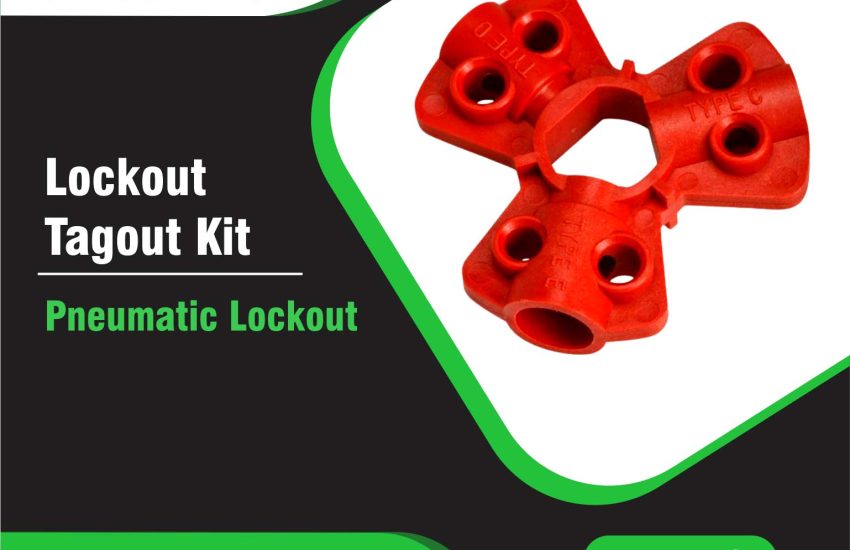Pneumatic Lockout Point In industrial settings where pneumatic systems control equipment, ensuring worker safety is critical. Pneumatic lockout devices play a key role in preventing accidents caused by accidental machine start-ups or pressurization during maintenance. These devices help isolate and secure pneumatic systems, controlling hazardous energy and ensuring compliance with safety standards. This article will explore the specifications, benefits, and features of pneumatic lockouts, while also incorporating SEO-friendly keywords to improve search engine visibility.
What Is a Pneumatic Lockout?
A pneumatic lockout is a safety device that isolates pneumatic systems during maintenance or repair activities. It prevents the accidental release of compressed air or other gases, which could otherwise cause machinery to start unexpectedly. These lockout devices ensure workers stay safe from hazardous energy sources and meet safety regulations, such as OSHA’s lockout/tagout (LOTO) requirements.
Why Use a Pneumatic Lockout?
Using a pneumatic lockout offers several essential benefits for industrial and commercial operations:
1. Enhanced Worker Safety
If pneumatic systems are not properly locked out, they can suddenly release stored energy, leading to injuries. A pneumatic lockout device de-energizes the system, preventing unexpected movements of machinery during maintenance.
2. Compliance with OSHA Regulations
OSHA’s lockout/tagout standards require the effective isolation of pneumatic systems during maintenance. Pneumatic lockouts help companies comply with these safety regulations, reducing the risk of workplace accidents.
3. Prevents Accidental Release of Pressurized Gases
Pneumatic systems operate under high pressure, and accidental release can be hazardous. Lockout devices prevent this release, ensuring the safety of both workers and equipment.
4. Improves Equipment Maintenance
By securing pneumatic systems, lockouts allow technicians to work on equipment without worrying about system activation. This enhances both the safety and efficiency of maintenance activities.
Specifications of a Pneumatic Lockout
When selecting a pneumatic lockout device, it’s important to consider specifications that ensure safety, functionality, and durability:
1. Material and Durability
- High-Quality Materials: Pneumatic lockouts are typically made from durable materials such as steel, aluminum, or heavy-duty plastic. These materials are resistant to wear, corrosion, and impact, ensuring a long lifespan.
- Chemical Resistance: For environments that involve chemicals or harsh substances, select lockouts made from materials resistant to chemicals, oils, and solvents.
2. Size and Compatibility
- Adjustable Size: Many pneumatic lockouts come with adjustable designs, enabling them to fit various valve sizes and types. This feature ensures compatibility with different pneumatic systems.
- Universal Fit: Some lockouts are designed to work with a wide range of pneumatic valves, offering versatility across various industrial settings.
3. Locking Mechanism
- Single or Multiple Locking Points: Some pneumatic lockouts allow for multiple locks, which enable different workers to lock out the device simultaneously. This feature is particularly useful in team maintenance situations.
- Positive Locking: A reliable and secure locking mechanism ensures the device stays in place, preventing accidental release of pressurized gases.
4. Ease of Use
- Tool-Free Operation: The best pneumatic lockouts require no special tools for installation or removal. This makes it easy to lock and deactivate equipment, enhancing safety during maintenance.
- Clear Visibility: Bright colors like red, yellow, or orange are often used for pneumatic lockouts, making them highly visible and improving safety awareness in industrial environments.
5. Safety Features
- Tamper-Proof: Some pneumatic lockouts come with features that prevent unauthorized removal, ensuring the system remains isolated during maintenance.
- Weather Resistance: For outdoor use or harsh environments, select pneumatic lockouts with weather-resistant coatings that protect against UV exposure, rain, and extreme temperatures.
Types of Pneumatic Lockouts
Several types of pneumatic lockouts are available to suit specific applications:
1. Valve Lockouts
Valve lockouts secure pneumatic valves, preventing pressurized air from entering the system. Available in multiple sizes, these lockouts fit various valve types.
2. Quick-Release Valve Lockouts
Pneumatic Lockout Point Designed for quick-acting valve systems, quick-release valve lockouts can be easily installed and removed, providing a fast and effective solution during maintenance.
3. Ball Valve Lockouts
For pneumatic systems using ball valves, ball valve lockouts prevent accidental valve operation during maintenance, ensuring the system remains de-energized.
4. Universal Pneumatic Lockouts
Universal pneumatic lockouts are compatible with a wide variety of pneumatic valves and systems. These lockouts offer flexibility and versatility across different applications.
Key Benefits of Pneumatic Lockouts
- Increased Worker Safety: Pneumatic lockouts help protect workers by preventing the accidental release of pressurized air.
- Improved Compliance: These devices ensure compliance with OSHA’s lockout/tagout regulations, which protect workers from hazardous energy sources.
- Reduced Risk of Equipment Damage: Locking out pneumatic systems prevents unintended activation, which can damage equipment or machinery.
- Enhanced Productivity: By minimizing accidents and ensuring safe maintenance, pneumatic lockouts contribute to a more efficient work environment.
- Clear Communication: Many pneumatic lockouts include spaces for tags, allowing workers to communicate the status of the lockout and identify responsible personnel.
Conclusion
Pneumatic Lockout Point is an essential safety device used to isolate pneumatic systems during maintenance or repair activities. These devices prevent the accidental release of pressurized air, ensuring worker safety. With a variety of materials, sizes, and locking mechanisms, pneumatic lockouts are available to meet the needs of both industrial and commercial applications.
When choosing a pneumatic lockout, consider factors such as material durability, ease of use, compatibility with different pneumatic valves, and compliance with safety regulations. Implementing pneumatic lockouts in your workplace not only protects employees but also ensures that your facility adheres to industry safety standards, reducing the risk of accidents and improving the efficiency of equipment maintenance.


